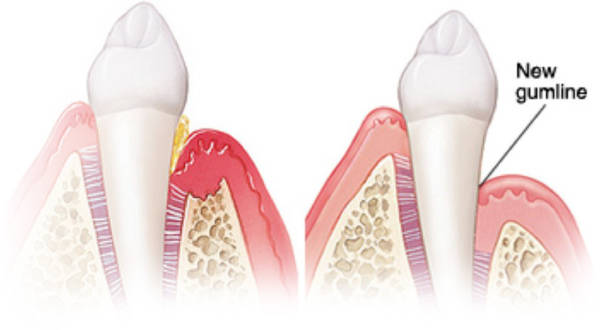Pocket Reduction Surgery
The fundamental driver of periodontal disease is microscopic organisms as a sticky, colorless, dry plaque that reliably frames on your teeth. Your bone and gum tissue should fit cozily around your teeth like a “turtleneck around your neck, however with a profundity of just 2 to 3 millimeters. As microbes create around the teeth, they can aggregate and progress under the gum tissue. When you have periodontal disease, the supporting tissue and bone are demolished, framing “pockets around the teeth. After some time these pockets wind up further, giving a bigger space to bacteria to live. This causes the gum tissue to fit less cozily around the teeth and the profundity of the “turtleneck to extend. These profound stashes gather significantly more bacteria, bringing about further bone and tissue loss. At the point when pockets advancement to a profundity of 5 millimeters or more noteworthy they turn out to be too profound to even consider cleaning with day by day at-home oral cleanliness or by expert routine consideration. This takes into consideration the dynamic development of bacteria past the profundity that neither the patient nor dental practitioner/hygienist can clean. It thusly ends up important to diminish the profundity of the pocket to encourage plaque removal.
Reasons for Pocket Reduction Surgery:

Procedure:
Pocket reduction starts with flap surgery medical procedure. The gum is isolated from the tooth and later reattached in another position. Much of the time, bony medical procedure is additionally done. This includes reshaping and smoothing the bone. After treatment is finished, the gum line will doubtlessly be lower. This leaves a greater amount of the tooth uncovered. On the off chance that the root is uncovered, continuous treatment with fluoride or another material might be expected to lessen affectability.
Prior to a medical procedure. A profound pocket enables plaque and tartar to gather far beneath the gum line. Irritation and disease have wrecked some supporting bone.
Opening the gum. The gum is first lifted and moved back, making a gum fold. Tartar and bacteria are then removed from the root. The specialist likewise removes ailing gum tissue.
Molding the bone. If necessary, the bone is smoothed and reshaped. This lessens unpredictable zones where bacteria develop.
Helping tissues mend. A substance might be connected to the root to support the ligaments and gum reattach. Instruments might be utilized to close the area and reduce bleeding.
Shutting everything down. The gum fold is sewn closed in a position that diminishes take profundity. A dressing might be utilized to secure the zone. This dressing is somewhat similar to clay or putty. Whenever utilized, it stays set up until removed by your dental practitioner at a subsequent visit.
After the gum recovers. When the gum is healed, the fastens break up or are removed. Your dental specialist additionally expels the dressing. The pocket is shallower. With a lower gum line, almost certainly, a greater amount of the tooth will be noticeable. Great oral cleanliness and normal dental visits are expected to keep up the health of the gum tissue.
It is essential to follow the specialist’s directions. Patients for the most part can hope to make the most of their typical schedule the next day. You should converse with us about any special post-operative contemplations you may have, for example, diet, practice or follow-up prescriptions. This will limit disturbance of your every day exercises.
Request an Appointment Today!

